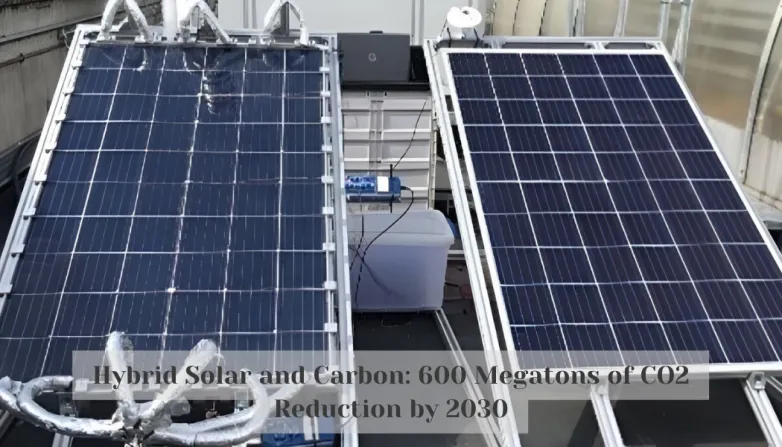Hybrid Solar and Carbon: 600 Megatons of CO2 Reduction by 2030
- Discover the potential of hybrid PV-T solar technologies to reduce global emissions with Professor Christos Markides' study from Imperial College London. Learn more about the different types of solar systems, collector design modifications, and advancements to facilitate the adoption of this technology.

A recent study led by Professor Christos Markides from the Department of Chemical Engineering at Imperial College in London has concluded that hybrid photovoltaic-thermal (PV-T) solar technologies have the potential to reduce global emissions by up to 3%. PV-T systems have the ability to simultaneously generate electricity, heat and other useful outputs from the sun's energy. Currently, there are several types of hybrid solar systems available on the market for different geographic locations, each with its own unique characteristics and advantages.
The review also evaluated the potential for innovation and technological advancements to further increase the performance, efficiency and affordability of PV-T systems. This includes studies into collector design modifications, improvements to thermal absorbers, use of phase-change materials, and higher-performance photovoltaic cell technologies. A spin-out company, Solar Flow, has been formed to commercialize a particular hybrid PV-T solar collector concept, and hopes to perform outdoor tests in early 2024.
This study provides a valuable resource for policymakers, energy planners and decision-makers, as well as an opportunity to further develop and adopt these promising technologies. It is anticipated that if the systems mentioned in this study are installed as proposed, global emissions could drop by 600 megatons of CO2 by 2030.
Can PV-T Solar Reduce Emissions?
Can PV-T Solar Reduce Emissions?
- PV-T systems have the potential to reduce global emissions by up to 3%, according to the study.
- PV-T systems have the ability to generate electricity, heat, and other useful outputs from solar energy.
- Different types of hybrid solar systems are available on the market for different geographic locations, with each offering unique characteristics and advantages.
- Studies into collector design modifications, improvements to thermal absorbers, use of phase-change materials, and higher-performance photovoltaic cell technologies, are being researched to further increase the performance, efficiency and affordability of PV-T systems.
- The potential exists for global emissions to drop by 600 megatons of CO2 by 2030, if the systems mentioned in this study are installed as proposed.
Also read


